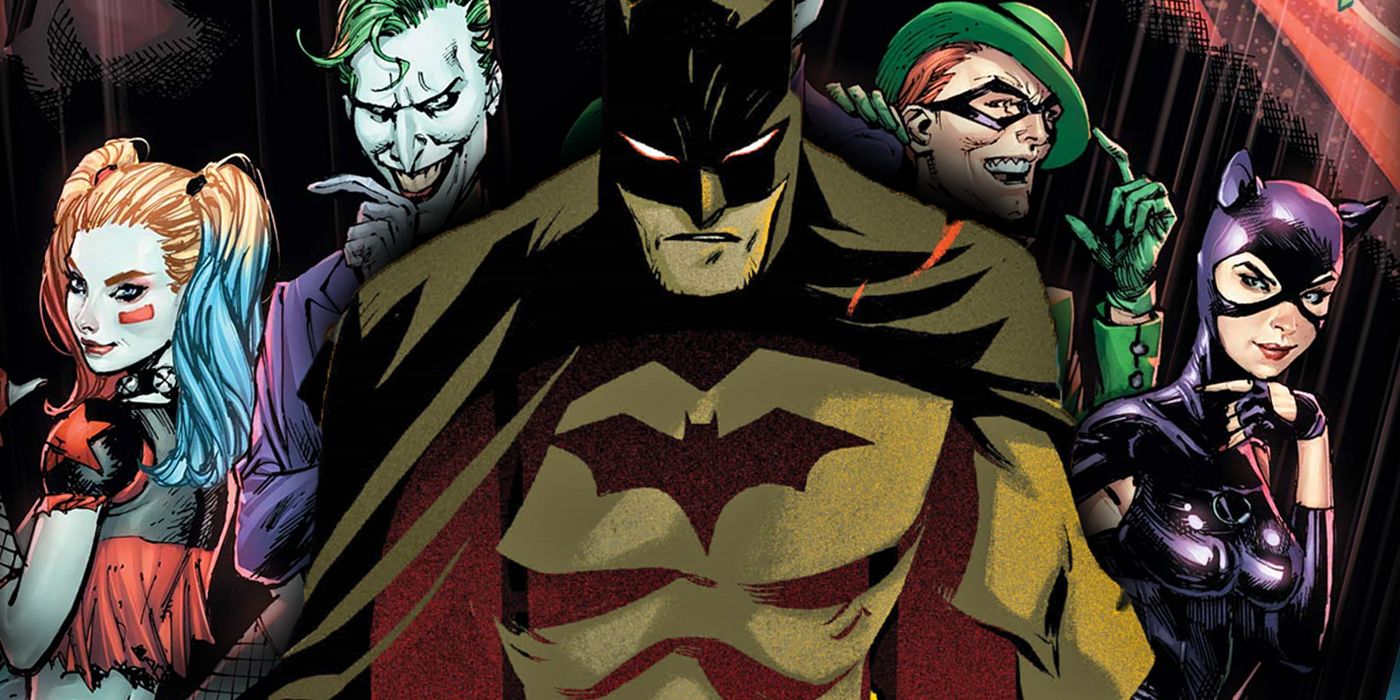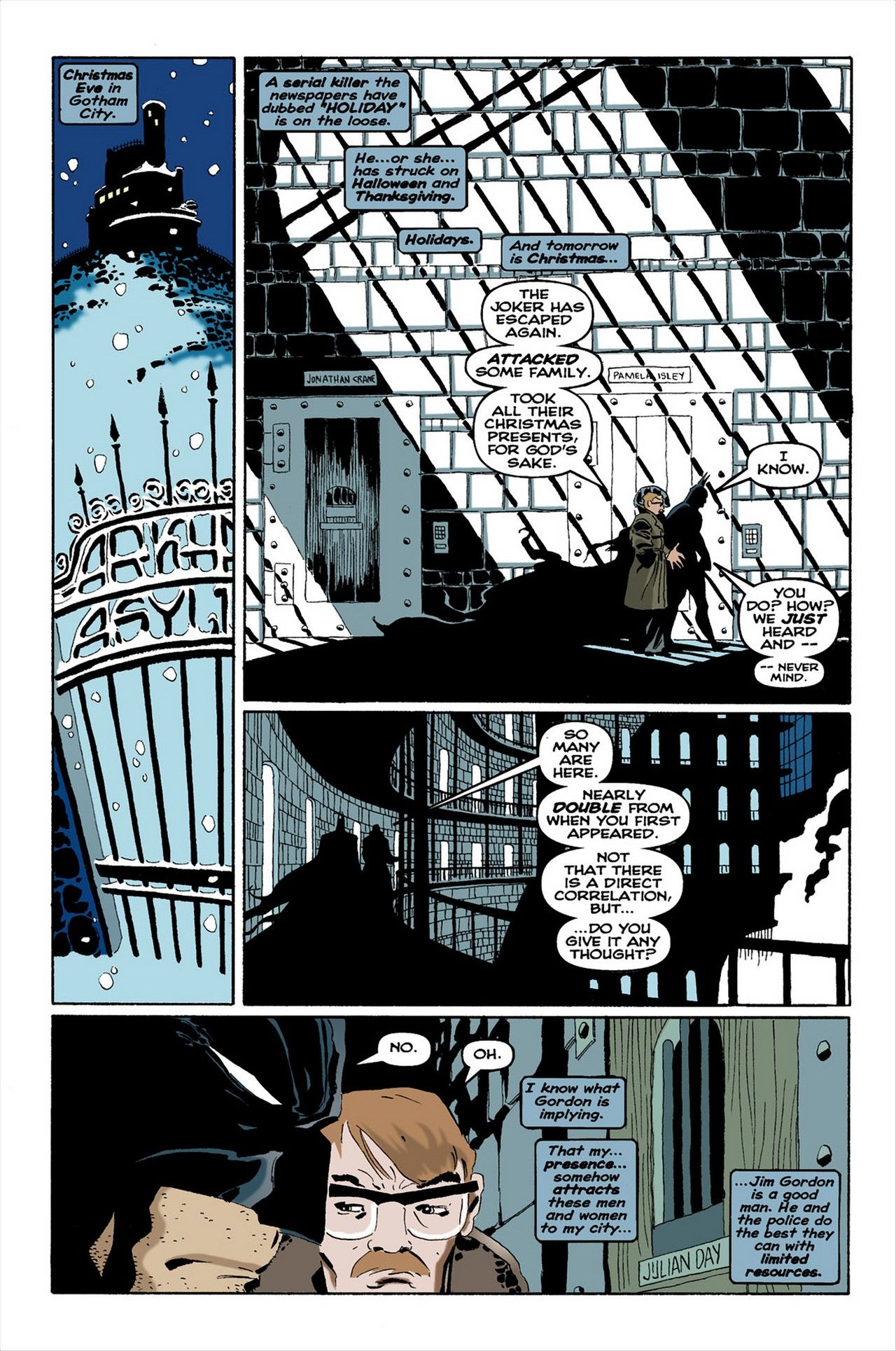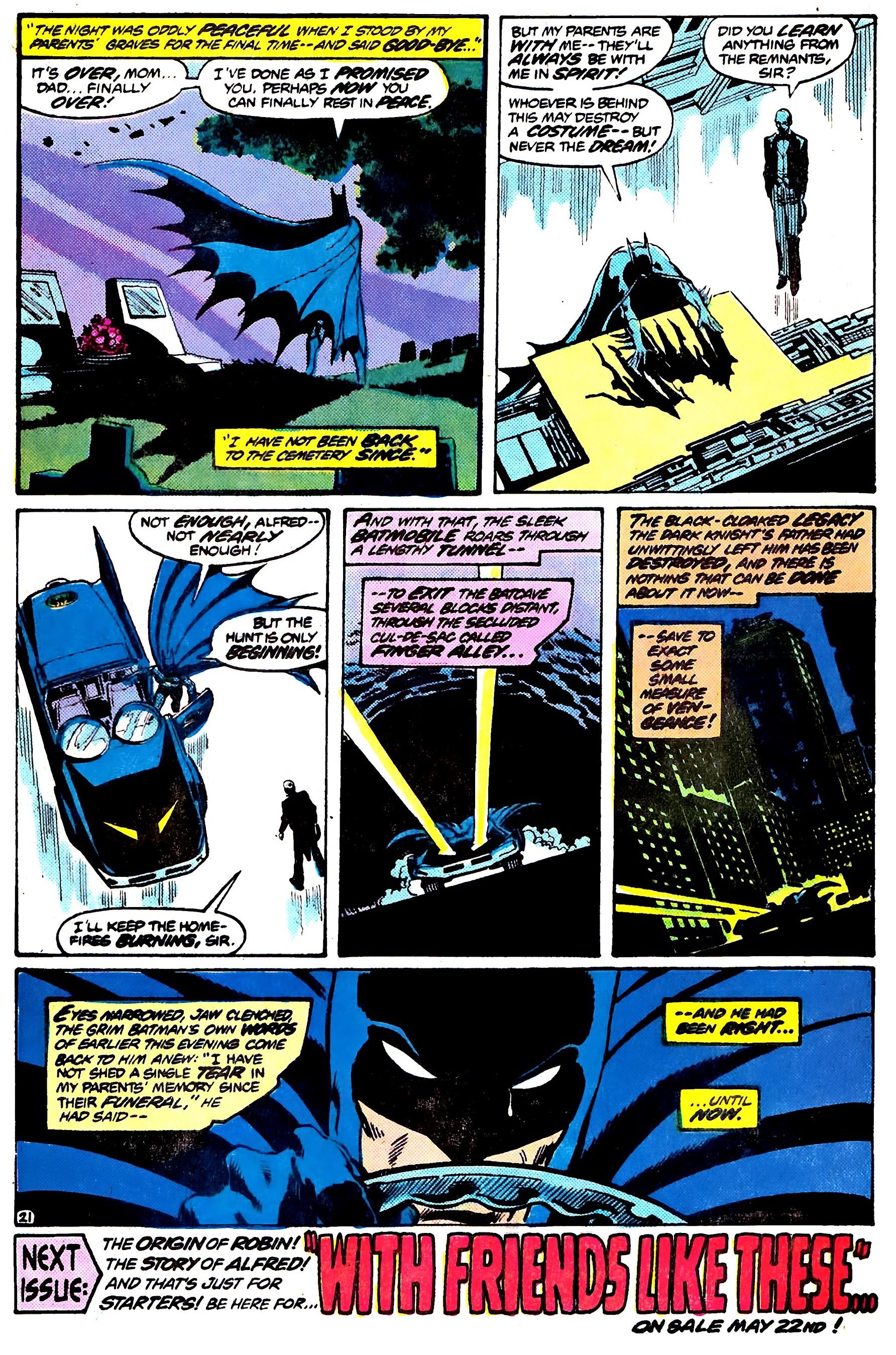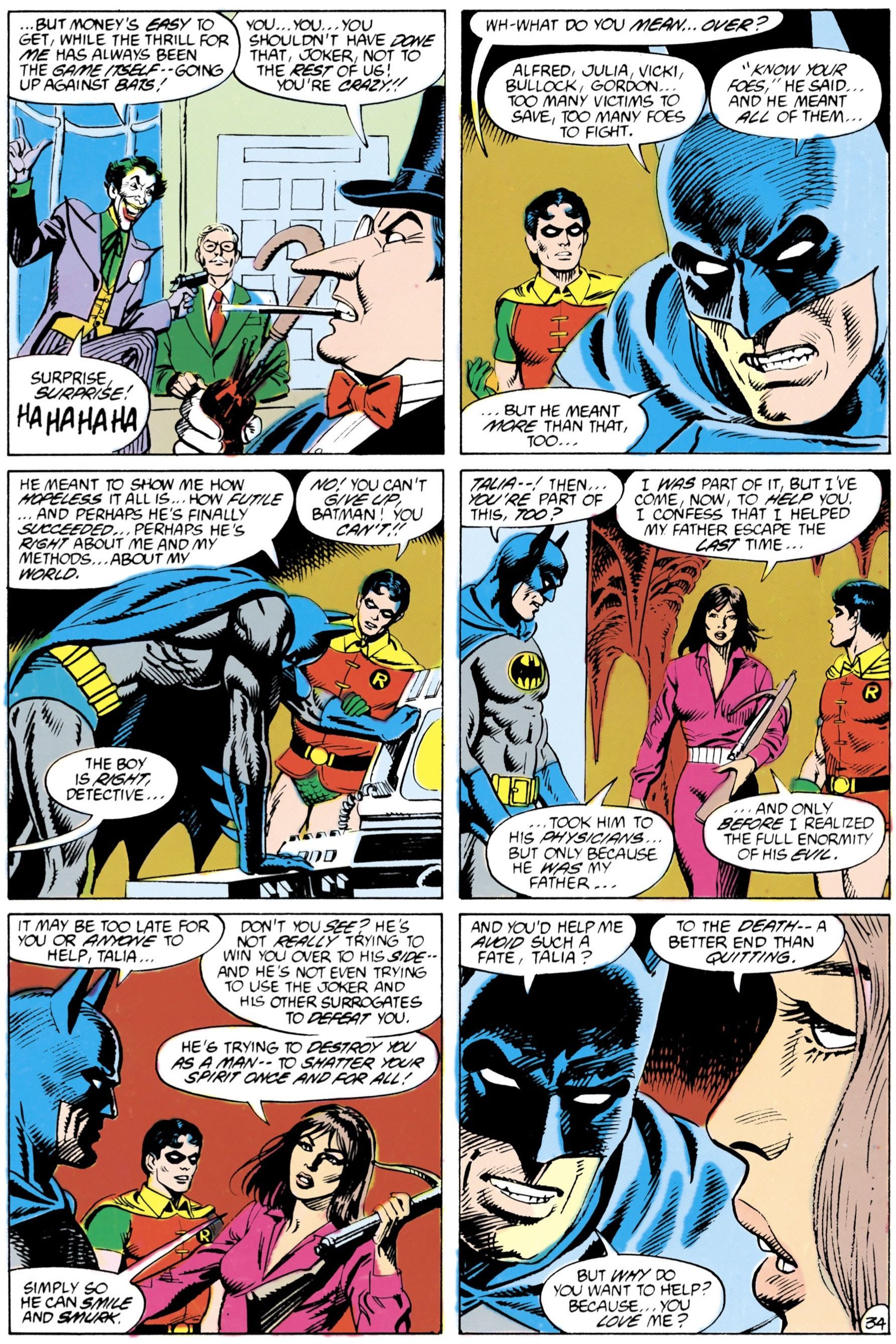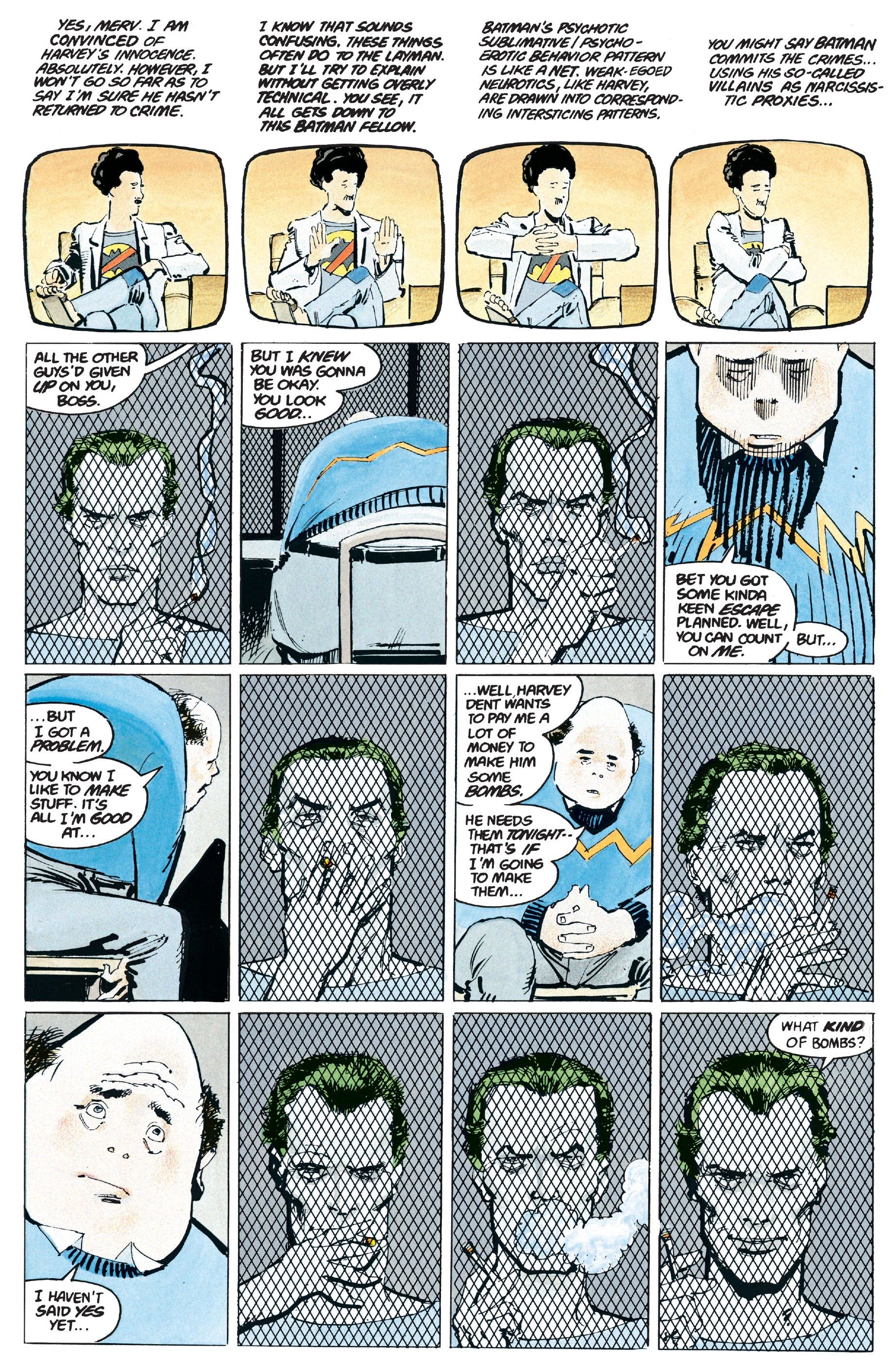Today, we look at when it was first theorized that Batman attracts crazed super-villains to Gotham City as a reaction to his presence.
In "When We First Met", we spotlight the various characters, phrases, objects or events that eventually became notable parts of comic lore, like the first time someone said, "Avengers Assemble!" or the first appearance of Batman's giant penny or the first appearance of Alfred Pennyworth or the first time Spider-Man's face was shown half-Spidey/half-Peter. Stuff like that.
Reader Alex B. wrote in to ask, "One of your recent columns inspired me to re-read The Long Halloween. In issue 3, Batman and Gordon briefly explore the now-ubiquitous question of whether Batman attracts his particular form of psychopaths to Gotham. As I read it, I thought, “This old saw,” but then instantly remembered that this series is 25 years old. I can’t imagine this idea was new then, but I don’t have an active recollection of when/where it first came up. Is it a Loeb original? The way he has Batman almost inwardly groan when Gordon raises it, suggests otherwise (meta-commentary perhaps)."
Here is the page in question, from Batman: The Long Halloween #3 (by Jeph Loeb, Tim Sale and Gregory Wright), where Batman and Jim Gordon visit Arkham Asylum (the story is set early in Batman's career) and Gordon notes how many more supervillains are showing up since Batman debuted...
It HAD showed up before then, Alex, but honestly, not THAT much before that, in the grand scheme of things.
THE DIFFERENCE BETWEEN THE FIRST GENERATION OF COMIC BOOK WRITERS AND THE LATER GENERATIONS
I bring this up so often, but it really is an important thing to note, which is that the difference between the first generation of comic book writers and the second (and later) generations is just monumental. It comes down to how they were raised, by which I mean the first generation of comic book writers grew up before there WERE comic books, and as a result, comic books naturally could not be an influence on them. This isn't to say that the Bill Fingers or the Otto Binders or the Gardner Foxes of the world did not love comic books. Of course they did, but their view of comics was much different from later generations because they grew up with pulp fiction and newspaper comic strips being their main influence, and as a result, there was very little in the way of deconstruction of the comic book form by these writers. After all, they were the ones literally CONSTRUCTING the comic book genre, so they weren't yet ready to DEconstruct it. There were exceptions, of course (Shelley Mayer, for one, stood out as someone who very early on was messing with the comic book format), but they were not that common.
When the second generation came in in the 1960s, though, these were the folks who grew up on comic books and so the various cliches and tropes of comic books were second nature to them, and thus, they soon began to deconstruct the stories. Some of the first generation of writers reacted well to this new approach and adjusted accordingly (I think it is fair to say that Stan Lee and Mort Weisinger and through Weisinger, his writers on the Superman titles, in particular, were quite reactive to what comic book fans specifically were interested in).
So, long story short, the Bill Fingers of the world were not interested in breaking down Batman's role in Gotham City. He was just interested in telling interesting stories within that basic, accepted framework, and thus nobody was doing stuff like, "Is Batman responsible for drawing these villains to Gotham City?" back then, or even stories REMOTELY in that sort of fashion.
WRITERS BEGIN TO BREAK BATMAN'S SETUP IN GOTHAM CITY DOWN A BIT
I think Len Wein was really the first writer to try to put Batman's mission into a sort of perspective in the 1980 miniseries, The Untold Legend of the Batman (art in the first issue by the amazing team of John Byrne and Jim Aparo)...
Wein was one of the first writers to spotlight just how taxing and messed up Batman's history was.
Six years later, Doug Moench also had Batman question whether his methods even work in Batman #400 as the villains keep on escaping and doing more harm...
That whole issue was about Ra's al-Ghul trying to break Batman down by making him feel as though his life's mission was pointless (amusingly, Gerry Conway had done a very similar "All of Batman's villains team up together" just a few years earlier, but Conway didn't even touch on any of these ideas. It was just a traditional, "Hey, here's all of Batman's villains together!" type deal. Although it WAS a fun story).
That issue, though, while written independently of the next comic book we're going to talk about, came out a few months AFTER the true answer to this question (and really, the standard answer to most questions about "When did the Batman comics start doing ____?"...
THE DARK KNIGHT RETURNS BEGAN TO DECONSTRUCT BATMAN
The answer is the first issue of the miniseries that we now refer to as The Dark Knight Returrns, where Frank Miller, Klaus Janson and Lynne Varley show a psychologist who insists that Batman draws people like Two-Face to Gotham City...
At the same time, we see that the Joker has been comatose since Batman retired and now that the Dark Knight is back, so is the Joker, also lending credence to the idea that these psychotic villains are here in reaction to the Batman. I don't think this theory is correct, but it is fair to say that this is where it debuted.
Thanks for the suggestion, Alex! If anyone has a suggestion for/question about a notable comic book first, drop me a line at brianc@cbr.com!

